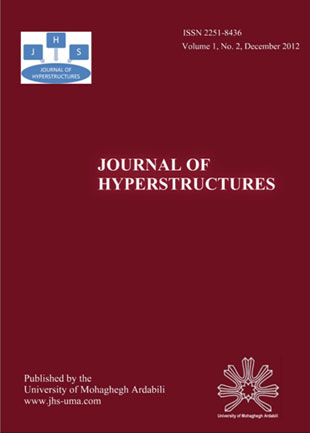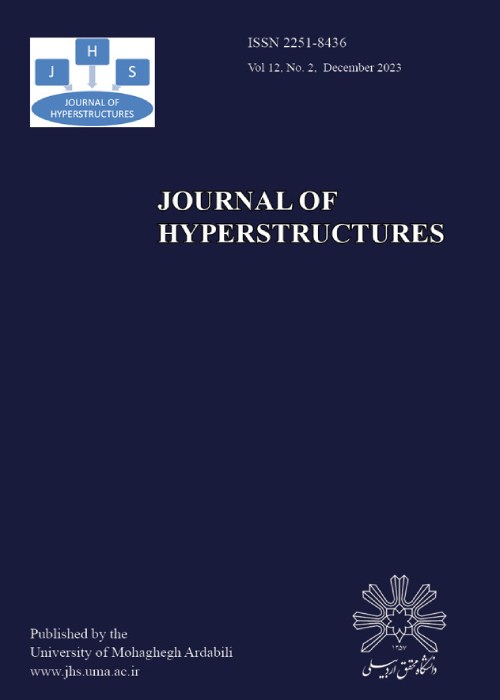فهرست مطالب

Journal of Hyperstructures
Volume:1 Issue: 2, Summer and Autumn 2012
- تاریخ انتشار: 1391/09/25
- تعداد عناوین: 7
-
Page 1In the present paper, we introduce the concept of fuzzy soft ring and study several algebraic properties. Thereafter, we define the notions of fuzzy soft ideal of a fuzzy soft ring, idealistic fuzzy soft ring and soft homomorphism between fuzzy soft rings and discuss some of their properties.
-
Page 16. We shall attempt to prove Cantor’s Hypothesis, a special case of which is known as the Continuum Hypothesis, namely that the cardinality of the power set of an infinite set is the consecutive cardinality. An ordered field of cardinality N_{\a[pha} with interval topology of weight N_{\alpha} is constructed, where ℵα is an uncountable isolated cardinal.
-
Page 24In this paper, by considering the notion of prime BCK-sub-modules of BCK-modules, we introduce a topology on prime BCK-sub-modules of BCK-modules and the notion of top BCK-modules, semi prime sub -BCK-modules and extraordinary sub- BCK-modules are introduced. Also the relationships between them are studied.
-
Page 31In this paper, we introduce the notions of $(\bar\in,\bar{\in}\vee\bar {q})-$fuzzy bi-ideals, $(\in,\in\vee q)-$antifuzzy bi-ideals and $(\bar\in,\bar{\in}\vee\bar {q})-$antifuzzy bi-ideals of an ordered semigroup.We characterize $(\in,\in\vee q)-$antifuzzy bi-ideals by$(\bar\in,\bar \in\vee\bar q)-$fuzzy bi-ideals, lower level sets and upper level sets.We characterize $(\bar\in,\bar \in\vee\bar q)-$antifuzzy bi-ideals by $(\in,\in\vee q)-$fuzzy bi-ideals, lower level sets and upper level sets. We characterize regular ordered semigroups through $(\bar\in,\bar{\in}\vee\bar {q})-$antifuzzy bi ideals and $(\in,\in\vee q)-$fuzzy bi-ideals.
-
Page 46In this paper, we present an efficient numerical method to solve linear Fredholm fuzzy integral equations of the second kind based on two m-sets of triangular functions. This approach needs no integration, so all calculations can be easily implemented. Moreover, the error estimate of the proposed method is given. The proposed method is discussed in details and illustrated by solving some numerical examples.
-
Page 61We introduce some new concepts as $left-weak^*-weak$ convergence property [$Lw^*wc-$property] and $right-weak^*-weak$ convergence property [$Rw^*wc-$property] for Banach algebra $A$. Suppose that $A^*$ and $A^{**}$, respectively, have $Rw^*wc-$property and $Lw^*wc-$property, then if $A^{**}$ is weakly amenable, it follows that $A$ is weakly amenable. Let $D:A\rightarrow A^*$ be a surjective derivation. If $D^{\prime\prime}$ is a derivation, then $A$ is Arens regular.
-
Page 71The generalized Hyers-Ulam-Rassias stability proposition in respect of the quadratic functional equation namely f(x+y+z) + f(x-y) +f(x-z) = f(x-y-z) +f(x+y) +f(x+z) is what is taken into account to be dealt with in this paper.


